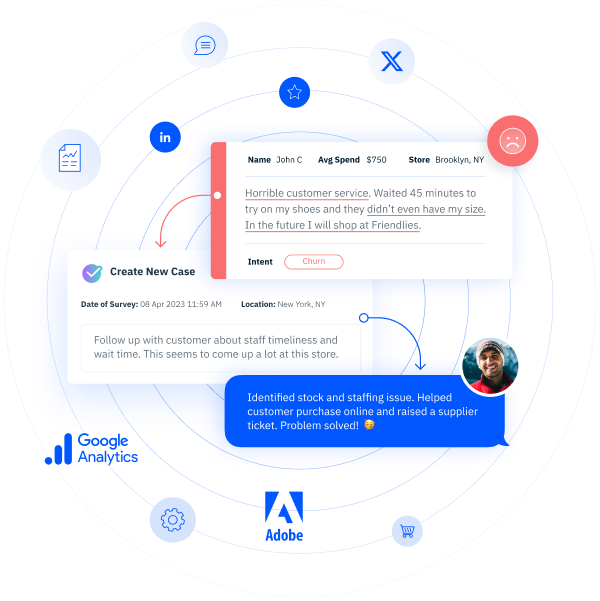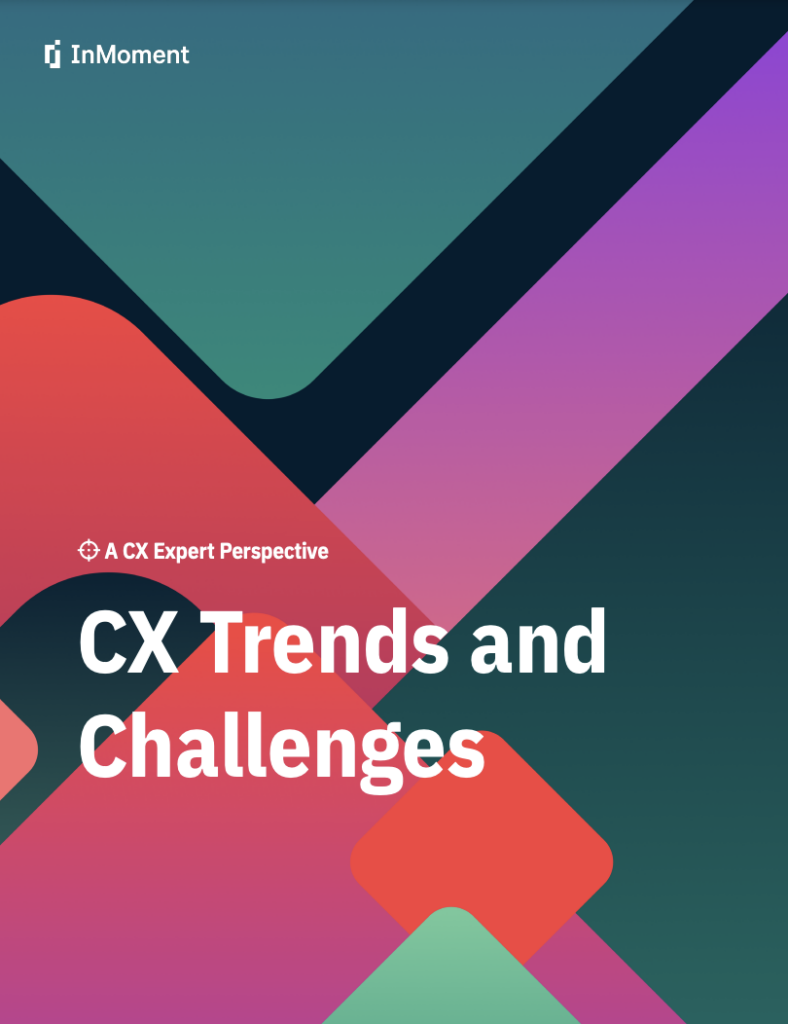How To Analyze Call Center Performance: Key Metrics, Tips, and Tools
Discover the top call center performance and quality assurance metrics, best practices, and tools to track, optimize, and enhance customer service and agent productivity.
In any call center or contact center, performance is the engine that powers the entire operation. High-performing call centers do a great job at keeping customers satisfied, and they’re highly efficient, reducing operational costs.
But high performance doesn’t happen by chance. Analyzing call center performance is the path to improvement—but you’ve got to do it right.
Performance tracking is a powerful tool that helps you improve both ends of the call. Your agents become more productive by learning what’s going well and where they could improve, and your customers enjoy a better, more satisfactory experience.
Why Analyzing Call Center Performance Is Important
Not yet convinced that analyzing call center performance is worth the effort? Here are a few advantages you can gain by taking a closer look under the hood.
Improving Customer Satisfaction
Performance analysis helps you identify what’s working in your contact center and what isn’t. When you find the pain points in customer interactions, you know where to focus on your quest to deliver better service, faster resolutions, and improved customer experiences. Improving customer satisfaction is the secret sauce behind a successful business: call center performance can have a massive impact on how customers feel about your brand.
Enhancing Agent Productivity
Call center analytics give you a clearer picture of how well your agents are performing in terms of productivity and customer satisfaction. You can use this information to refine things like training programs and workload distribution. As you identify processes and tactics from high-performing agents, you can implement those in team workflows and onboarding materials.
Once you know how well your agents are performing, you can double down on the good and problem-solve the rest. The result is better training, a more evenly distributed workload, and efficiency gains everywhere you look.
Reducing Operational Costs
Higher customer satisfaction and better agent productivity both lead to fewer and shorter calls: Happy customers don’t call in with problems as frequently and productive agents can process more calls per shift—so you trim operational costs without lifting a finger!
Call performance data can also reveal inefficiencies in call management, wait times, and workflows to further help you balance available resources (agents) with demand.
Data-Informed Decision-Making
When you work with real data, you can do more than just put out fires—you can make smarter decisions before problems even start. Performance analytics give you a clear picture of the state of operations, including where you need to adjust to keep your call center running at its best.
Data-driven decision-making helps you fine-tune agent workflows and adjust staffing levels based on actual customer needs instead of just gut feelings. For example, if you’re struggling with long wait times, then you either need your agents to process calls more quickly or you need more agents.
But which is it? Data can show you in real terms how well your agents are doing in terms of call length and first-call resolution (especially compared to historical data), giving you the insight you need to know where to start.
The result? A call center that stays one step ahead, ready to adjust to evolving trends without missing a beat.
What Tool Is Best for Analyzing Call Performance?
There is a wide range of tools and approaches out there for analyzing call performance, but how do you decide which approach is the best?
We believe the answer is obvious: You can’t truly analyze call performance unless you can analyze the content of those calls. That requires conversational intelligence software.
Conversational intelligence software reads and interprets text-based conversational interactions using artificial intelligence (AI) and natural language processing (NLP). The goal is to better understand the conversation’s intent, participants’ sentiments, and much more. When we say “text-based,” we’re talking about audio calls in your contact center, which are automatically transcribed and processed as text (how cool is that?!).
With conversational intelligence, you can harness the power of speech analytics to group call data by feature, outcome, customer sentiment, and more. You can use this data to measure customer interactions at scale, unlocking actionable insights from call data that go far beyond mere call performance.
How Do You Analyze Call Center Performance? 7 Key Steps
Gaining a clear picture of your call center’s performance is essential in today’s customer-first environment. But you don’t get valuable insights from guessing. You need the right approach to turn data into action.
Use these seven steps to analyze call center performance the right way so you can take performance (and results) to a new level.
1. Define Key Performance Indicators (KPIs)
The first step is defining key performance indicators (KPIs). Specifically, which KPIs are the right targets for your call center and what it’s trying to achieve.
This is key because to learn the right information, businesses have to measure the right metrics. Just because you can measure it doesn’t mean it’s the right metric for what you need to learn.
For example, some call centers may be focused on a certain performance metric like speed or efficiency, while others might be prioritizing positive customer service outcomes in response to a string of unpleasant online reviews. The first center may closely monitor handle time, while the second may focus on customer satisfaction scores instead.
And of course your call center may prioritize something completely different. So start by defining exactly what it is you need to target, then identify the KPIs that correspond to the aspect of performance you want to improve.
Common KPIs for call centers may include:
- Average handle time: Average duration of call handling, working a case from first contact to resolution or conclusion
- First call resolution: Percentage of calls solved at the first point of contact
- Customer satisfaction scores: Measurement of customer sentiment after an interaction with the call center
- Total call volume: The number of calls an agent or team completes during a defined time period.
2. Use a Conversational Intelligence Tool
Some KPIs, like average handle time and first call resolution, are easy to measure with numbers alone. But numbers aren’t enough to paint a full picture. High first-call resolution scores are great, but not if the resolution left most customers angry.
Conversational intelligence tools are a smart way to engage in sentiment analysis to understand customer attitudes without manually reading and categorizing thousands of entries. Results simply feed to your call center dashboard, letting you quickly visualize them and form a plan for improvement.
3. Gather Data
Once you know which metrics to track, the next step is collecting the right data. This includes both structured data (like call volume, average handle time, and first call resolution rates) and unstructured data from customer feedback and conversation transcripts.
Structured data is straightforward, feeding directly into databases and dashboards in real-time. The real challenge is capturing that unstructured data, which requires tools like conversational intelligence software to process insights from customer interactions.
This data could include:
- Customer call recordings (or transcriptions of those recordings)
- Customer feedback (surveys)
- Written customer interactions (email, chat, helpdesk)
4. Analyze Data
Interpreting call center metrics starts with identifying patterns: what issues surface the most frequently? Are certain customer issues leading to negative customer sentiment? Do some call center agents consistently lag behind average response times, and does the qualitative call center data suggest how that can be addressed?
Essentially, you’re looking for trends to show you what’s working well, where processes break down, and what adjustments you can make to improve both customer satisfaction and call center productivity.
5. Implement a QA Scoring Rubric
As you dig deeper into the data you’ve collected, it’s a good idea to implement a quality assurance (QA) scoring rubric for even more insights. But how do you do that?
Partnering with a conversational intelligence provider like Pearl-Plaza allows contact centers to automatically QA 100% of calls rather than the typical 5% most businesses settle for. Pearl-Plaza rolls performance metrics into a customized QA scoring rubric that aligns with your company’s specific service standards and operational goals, helping you track the individual call center agents’ performance over time.
Our QA Scoring Rubric includes specific QA categories. Our out-of-the-box methodology focuses on:
- Connection to the customer
- Asking probing questions
- Reducing customer effort
Each of these categories has an associated score, which is customized based on relative importance to your business. From there, you can slice and dice the data however you want: individual agents, entire teams, or segments like team level, region, business unit, and more.
6. Identify Areas for Improvement
Performance data can reveal inefficiencies, agent training gaps, or consistent customer frustrations that need attention. If agents repeatedly struggle with certain issues, it’s a sign they need better training or clearer guidance. If the same customer complaints keep coming up, there may be a bigger problem with your product or service that needs fixing.
The goal is to make interactions easier for both customers and agents. By tackling these pain points, you can make customers happier, reduce call volumes, and cut down on operational costs.
7. Implement Changes and Monitor Results
Once you’ve identified areas for improvement, it’s time to take action. Some fixes will be quick and obvious, but others may require testing different solutions to see what works best.
For example, you might identify a gap in your agent training. Do you send an email? Create a course or module? Post to your knowledge base?
Treat every change as an opportunity to learn. Roll out updates, track their impact, and keep an eye on performance data to see if they’re moving the needle. If something doesn’t deliver the results you expected, adjust and try again.
Think of call center performance as an ongoing process of adapting strategies to help both customers and agents have the best possible experience.
Key Call Center Metrics To Measure
As you set up your call center analytics, keep an eye on these mission-critical metrics:
Customer Experience Metrics
First up are the metrics about customer behavior and how they feel after interacting with your call center. These include:
- Customer Satisfaction Score (CSAT)
- Net Promoter Score (NPS)
- First Call Resolution (FCR)
- Customer Effort Score
Each of these metrics measures the quality of customer interactions, putting qualitative and emotional data into measurable formats.
Agent Performance Metrics
Next are the metrics that show how well your agents are doing. These include:
- Average Handle Time (AHT)
- Call Resolution Rate
- Adherence to Schedule
- Call Duration
You can measure these at both the individual and team levels, either for individual coaching or general improvement purposes.
With Pearl-Plaza, you can connect agent performance metrics to service standards and QA Scoring. We can also identify the topic, tone, and overall success of a call on a hyper-granular level:
In our default configuration, the portion in the box in the above graphic is what rolls up into the agent’s QA Score.
Operational Efficiency Metrics
Last, consider the metrics that show how efficiently your call center is operating, including:
- Call Abandonment Rate
- Service Level
- Cost Per Call
These metrics likely won’t tell much of a story on day one, and they won’t immediately reveal root causes. But monitoring trends over time can give you and your call center managers clarity about which direction the ship is headed.
Unlock Call Performance Insights and Improve CX with Pearl-Plaza
Analyzing call performance is the key to improving CX and operational performance simultaneously, but doing effective analysis work requires the right tools and systems.
Pearl-Plaza is the AI-driven Experience Improvement platform that turns all of your unstructured CX data into valuable, actionable insights. Our Conversational Intelligence tools can interpret, summarize, and extract data from every source of conversational data, unlocking a level of insight that didn’t seem possible before.
And Pearl-Plaza doesn’t stop there: Our platform is a fully Integrated CX Intelligence platform built for the enterprise, with a suite of tools and capabilities designed to help you thrive.
Explore how Pearl-Plaza can unlock call performance insights and help you improve CX with conversation analytics software: Learn More Now





